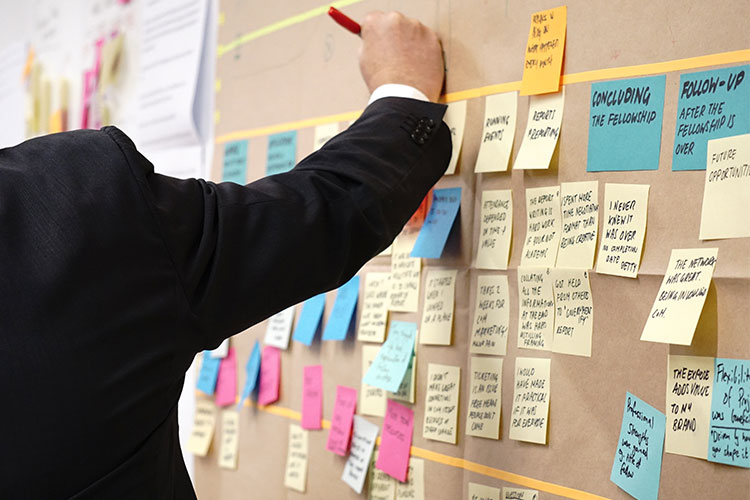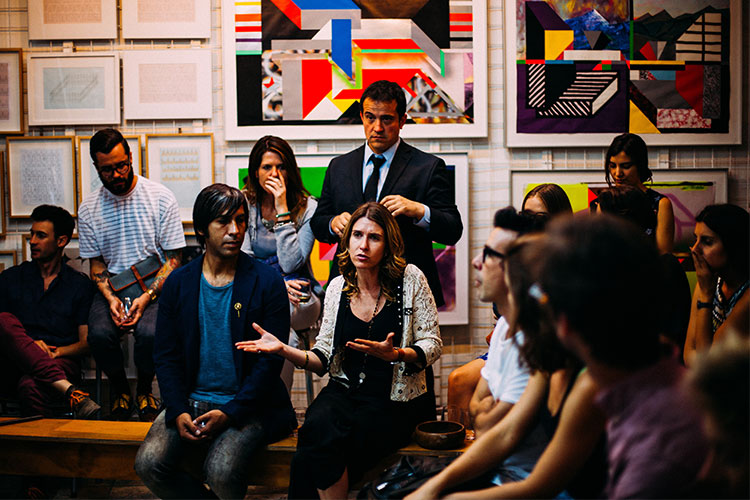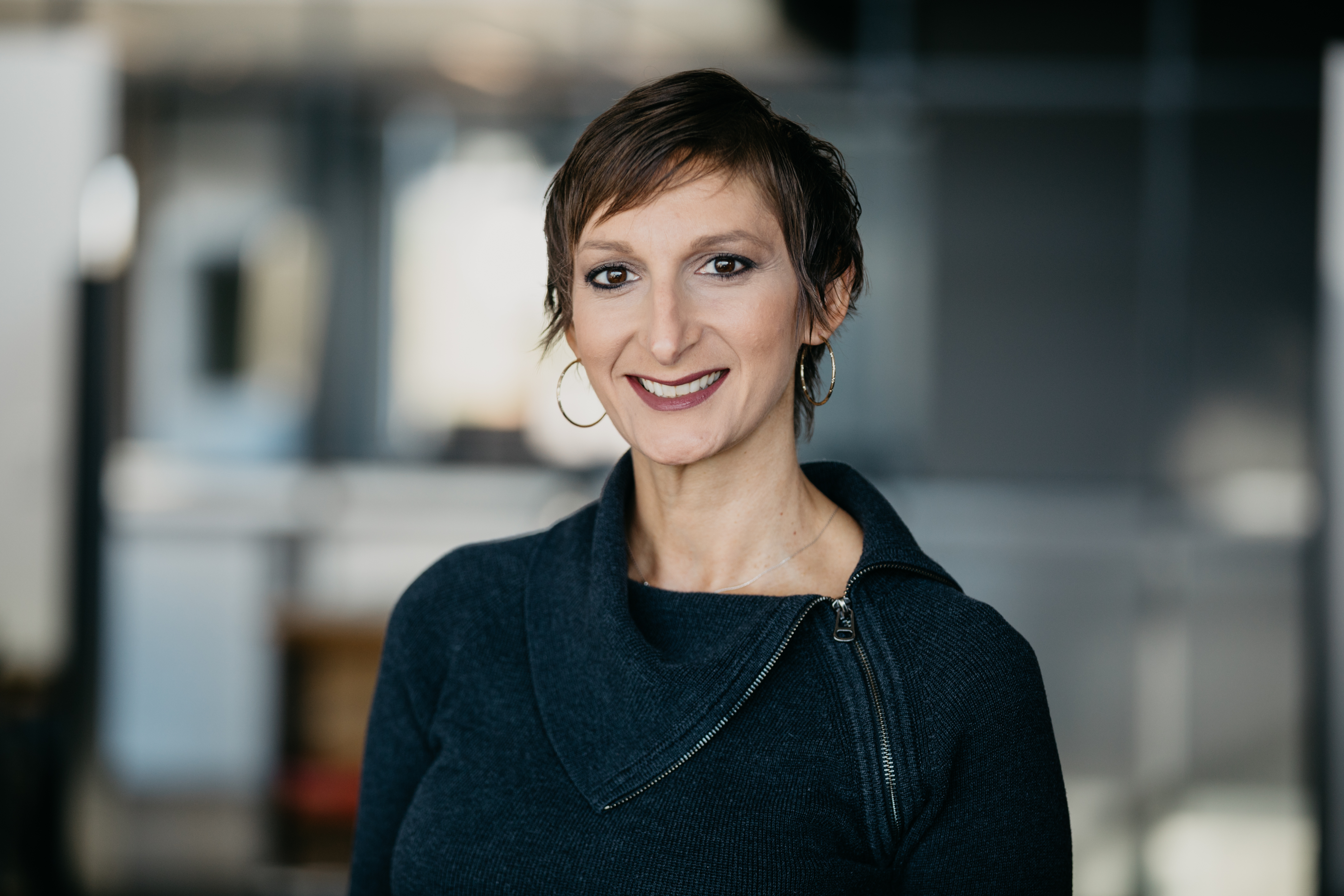Healthcare design projects involve countless input from partners and stakeholders. One group that shouldn’t be overlooked: the people who will use the building when it’s complete. Tapping into their needs and experiences can make your next project even more successful.
By: Char Hawkins, IIDA, LEED AP, NCIDQ // Senior Interior Designer
The exciting thing about the design process is also what makes it so challenging: There are almost limitless options and variables. Size, goals, function, and style are all highly subjective decisions based, in most cases, on budget, timeline, and the opinions of the people chosen to be the project’s decision-makers.
Fundamentally, the process involves the designers and building owners working together to create a space that’s both functional and pleasing to its users.
But who determines the quality of the experience the building provides? Usually, it’s by a core group of people in leadership roles who meet with the design team and describe the desired functions. Sometimes key members of staff who are familiar with daily operations are brought in to represent the end user’s perspective. Less often is the community directly asked for input – and that’s a shame. Because the perspective of the patients and families served by the building, and those who live and work near it, can be invaluable.

How to Engage the Community
There are different methods for engaging with user audiences and tapping into their needs and ideas. One way is a patient advisory group made up of former patients and the family members who supported them through their care. The design team meets with them to discuss their recent experiences as a patient within a current facility. They are asked to give the team insight on what works well, what they wish was different, how their expectations were or weren’t met, and similar issues. Having them describe their needs and experiences helps remind the designers that, at the end of the day, their job is to serve people. Patient advisory groups may meet once at the start of a project or several times over the course of the work.
Another approach is the community advisory group. This often involves reaching out to a group of people that live and work in the area – the potential end users of the project. It can be an effective way for owners to form a tighter relationship with the community they serve and strengthen community perception of the project. It’s also a great way to understand deficiencies in the community, setting the groundwork for healthcare systems to explore collaboration with groups that could provide additional services in the facility, such as a fitness center or health and wellness service. (For an example, please see our recent article, "A New Hybrid Model for Healthcare Architecture.”)
The Benefits of Community Engagement
In any project, the owner and design team work together to shape a space that will create the best experience for the end users. They schedule visioning sessions where the team will immerse themselves in the conceptual space and try to put themselves in a patient’s shoes. However, there are times where it might make more sense to go seek their direct input instead—especially if that experience is unique. In those cases, the best way to plan and design a space tailored to them is to simply ask them what they need.
Community input often sheds light on solutions or problems that designers might otherwise miss. As much as we strive for ideal experiences, we can still miss the mark by making assumptions. Hearing the patient’s perspectives keep that in check and can validate our beliefs — or provide a correction. Questions like, “what makes a family respite space comfortable” are often best answered by an actual patient or family member who has spent hours, or days, in a facility under duress. Helping alleviate stress, or anxiety, or boredom (especially for kids) can dramatically affect their perception of the institution as a whole.
Engagement can also help the design team better understand the local culture the facility will serve. Projects occur in a variety of communities – some affluent, some underserved; some rural, some urban. It could be very different from our own. It’s important that, as designers and owners, we seek different perspectives. It’s okay, even preferred, to be open about your desire to identify blind spots and adjust your thinking.

What We’ve Learned First Hand
Here are four tips to keep in mind as you consider community advisory groups, based on DesignGroup’s years of inviting them into our process.
1. Clarify your goals before you start
What do you want to gain from the advisory group’s input? The owner and design team need to define what they want to learn and how they will facilitate the sharing. Are you seeking input on a narrow concept, such as a specific department? Or are they interested in something broader, like the full experience, from entering to exiting the facility?
2. Show patience and dig deeper for insights
When you receive negative feedback to a design decision that’s already been made, it can be frustrating, to say the least. There can be a temptation to disregard the negative comments. When this happens, it’s important to thank your advisory group for sharing their insights, and strive to seek a deeper understanding of why they feel the way they do about a particular design solution. Change can be a hard pill to swallow. If, for example, the decision is made to move from centralized caregiver stations to decentralized, you may encounter some pushback from patients who have fond memories of walking down a corridor and having a cheering section at the nurse station. In this example, the question is not if we should go back to centralized nurse stations. The question becomes, “In the face of change, how do we incorporate the elements that will be missed? How do we give patients that feeling of accomplishment when they are able to walk down the corridor?”
Additionally, when a bad experience or reaction is shared it cannot be countered with excuses or a rebuttal. The very purpose of engaging the patients is to hear the good and the bad. From that knowledge we have the opportunity to create an experience that is even better.
3. Unusual input is still valuable
Sometimes a group may suggest an idea that is just not feasible or aligned with the project's goals. Patients are not as well versed in safety guidelines, building codes, and budgetary constraints. However, instead of rejecting or disregarding what may seem like a crazy idea, it’s important to keep digging to understand how what they experienced led to this idea. Generally, an idea comes from an honest attempt to improve a bad or mediocre experience. The key is to get at the heart of the broken experience and understand it, without the community member feeling as though they’ve just shared a silly idea. Resist the urge to dismiss their input – good ideas can come from unlikely sources.
4. Leave room for more input
When organizing an advisory meeting, it’s important to create a comfortable setting where guests feel safe sharing their experiences. Yet despite your best efforts, there are often a few people who prefer to speak privately or write down their thoughts and send them later. And that’s OK! They may be harboring an important insight they simply aren’t comfortable sharing in public. Always have a way for guests to follow up and leave plenty of time after the event for guests to have a word one-on-one and to mingle with each other.
As planners, designers, and architects, we work with the owner and end users in order to design spaces that are functional and beautiful. But so much more insight stands to be gained by reaching out to patients or community members. To quote Maya Angelou: “I’ve learned that people will forget what you said, people will forget what you did, but people will never forget how you made them feel.”
Gaining an understanding of how people feel when they encounter a space you’ve designed—hearing from patients about their personal experiences—sheds light on what otherwise we wouldn’t have seen. When done properly, engaging the community brings a deeply meaningful and often unforgettable element to the planning and design process.
For another example of DesignGroup community partnership in action, in this case in the higher-education space, please see, “Successful Student Experiences Start with Partnership.”

Char Hawkins, IIDA, LEED AP, NCIDQ // Senior Interior Designer
Char has over 19 years of professional experience as an interior designer specializing in healthcare environments. She believes in a holistic approach to design, blending flow and function with a sense of balance, a feeling for lighting, and an awareness of the latest trends. Clients appreciate Char’s approachable style, zest for life, and an enjoyment in shaping their environment.
